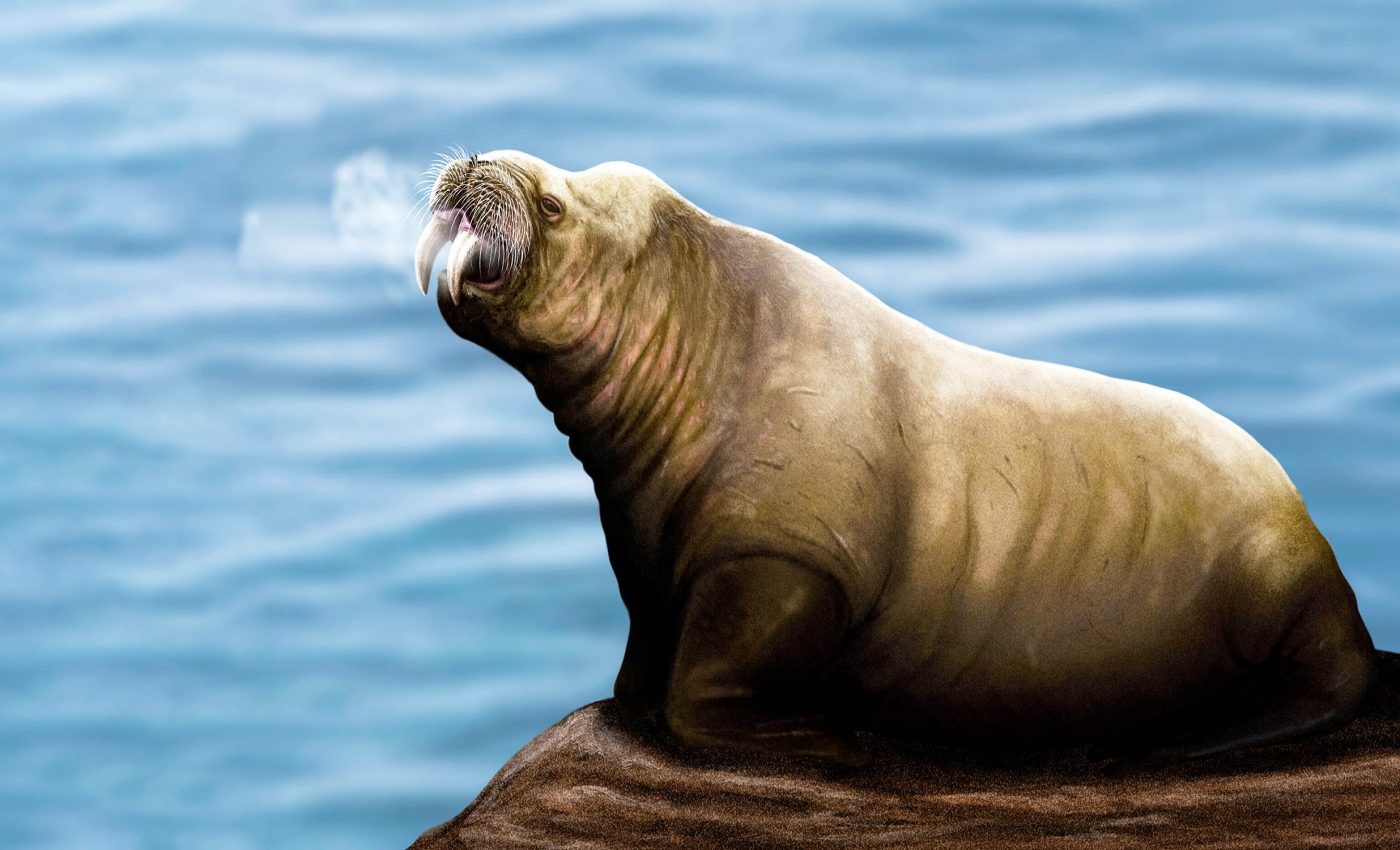
Extinct mammal discovered that resembles a modern-day walrus
Have you ever thought life was filled with similar looking faces? Turns out, the animal kingdom follows the same rule, only with a twist of evolution. Meet Ontocetus posti, an extinct walrus-like mammal who existed way before our current chunky friend, the walrus.
Filched from the depth of the North Atlantic by an ardent team of paleontologists, this marvel of the past brings unique insights into how evolution tinkers with life forms.
Dr. Mathieu Boisville, a paleontologist from University of Tsukuba, Japan, was the one leading this group of fossil hunters.
The team’s work shines a spotlight on an extinct species that reportedly shared surprising similarities with the modern-day walruses.
Ontocetus posti: Wrong identity, right species
Norwich, United Kingdom, and Antwerp, Belgium — from the storied soils of these regions, the fossils of Ontocetus posti emerged.
Initially mistaken for another species, Ontocetus emmonsi, it took a rigorous examination of the mandibles to realize the truth.
A fantastic ensemble of features including four post-canine teeth, a larger lower canine, and a fused and short mandibular symphysis hinted that the remains actually belonged to a new species.
These features paved the way for Ontocetus posti‘s walrus-like suction-feeding capability.
Extinction of the walrus-like mammal
What’s interesting is how this genus managed to navigate from the North Pacific Ocean to the Atlantic.
The journey, that took place during the Mio-Pliocene transition, was likely aided by the Central American Seaway.
This passage of water, crucial before the closure of the Panama Isthmus, expedited this intriguing migration. However, as the world began to cool down in the Late Pliocene, marine life was significantly impacted.
This led to the unfortunate extinction of Ontocetus posti during the Early Pleistocene, paving the way for the cold-adapted Odobenus rosmarus, our present-day walrus, to evolve and thrive.
Significance of Ontocetus posti
Examining the unique features of Ontocetus posti not only illuminates its own evolutionary path but also provides a fascinating glimpse into the dynamics of adaptation in marine mammals.
The morphological adaptations seen in this species underscore how environmental pressures can shape anatomical structures over millions of years.
For instance, the development of specific dental traits, such as the enlarged lower canine, speaks volumes about the feeding strategies employed by these ancient mammals.
Such adaptations enhance our understanding of the ecological roles that Ontocetus posti may have played within its environment, including its dietary habits and the competition it faced.
Implications for future research
The study of Ontocetus posti opens new avenues for research into the evolutionary history of marine mammals and their responses to historical climate changes.
As paleontologists continue to uncover fossil evidence, there lies immense potential to deepen our understanding of biodiversity during periods of significant geological transition.
Furthermore, the insights gained from Ontocetus posti‘s adaptation and eventual extinction could provide valuable lessons concerning current marine species facing rapid climate change.
By learning from the past, we may better prepare for the challenges that lie ahead in preserving marine biodiversity amidst shifting environmental conditions.
Comparative anatomy of Ontocetus posti
A closer inspection of Ontocetus posti reveals important anatomical similarities and differences when compared to its modern counterpart, the walrus.
Notably, while both species exhibit traits suited for suction feeding, Ontocetus posti displays a distinctively narrower snout, which may imply different feeding strategies in response to ecological niches.
The arrangement and morphology of its teeth serve as a testament to its dietary adaptations, suggesting that it thrived on a varied diet that possibly included both hard-shelled prey and softer marine organisms.
Additionally, the robust skeletal structure of Ontocetus posti hints at a different locomotion strategy within the water, one that could have influenced its ability to navigate both coastal and open-sea habitats.
Understanding these anatomical nuances not only enhances our comprehension of Ontocetus posti’s lifestyle but also enriches our knowledge of how evolutionary forces sculpt physical traits in response to environmental needs, thereby offering deeper insights into the adaptability of marine mammals through time.
Adaptation and survival
The unearthing of Ontocetus posti illuminates the evolutionary path of walruses, underscoring how environmental changes have influenced the need for adaptation and survival mechanisms in marine mammals.
The feeding adaptations similarities between Ontocetus posti and the modern walrus best exemplify this process. It’s these dynamic evolutionary shifts across different periods and environments that keep the story of existence perpetually interesting.
It’s quite thought-provoking how millions of years ago, an extinct species mirrored certain characteristics we find in existing species today. Truly, in the theatre of existence, the curtain never falls.
The study is published in the journal PeerJ.
—–
Like what you read? Subscribe to our newsletter for engaging articles, exclusive content, and the latest updates.
Check us out on EarthSnap, a free app brought to you by Eric Ralls and Earth.com.
—–













